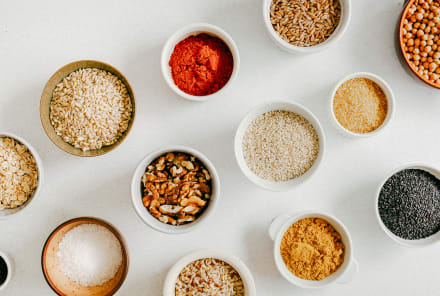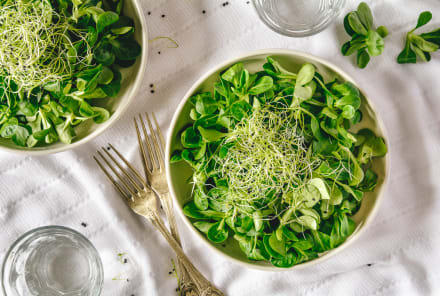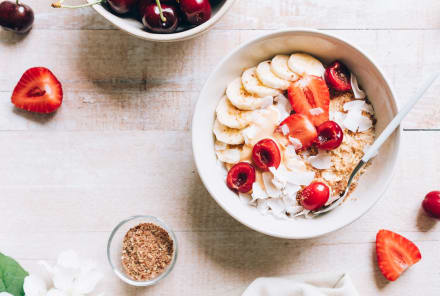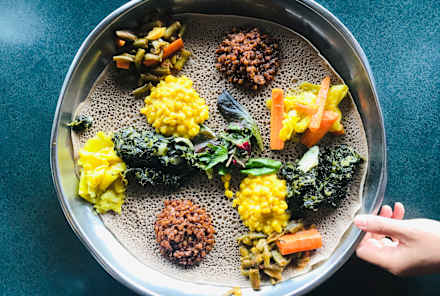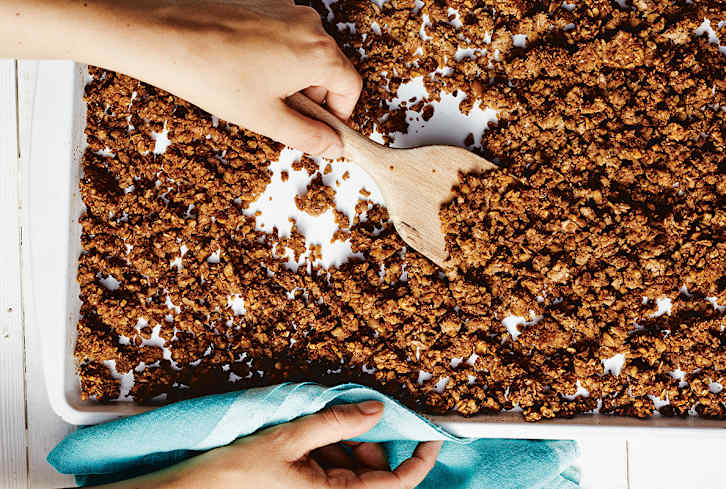Advertisement
How To Do A Kitchari Cleanse, The Ayurvedic Practice People Are Loving

Sahara Rose is an author currently living in Los Angeles, California.

We live in crazy times with crazy schedules, and the best thing we can do for our bodies is keep it simple. Kitchari is considered the most healing food in ayurveda, the world's oldest health system and sister science of yoga.
Kitchari is given to all ayurvedic patients because it's so easy to digest, giving their systems a break to restore and heal themselves. Think about it—if a car is always on, eventually it's going to crash. Well, our digestive systems are the same way. If we're constantly stuffing hard-to-digest food in it (even things seemingly easy like a salad), we can actually burn out our digestive fire over time. Kitchari is like a reset for your gut, and best of all—it's delicious. It is considered the most sattvic (pure) meal in the yogic tradition, and you will find it in ayurvedic Panchakarma centers and ashrams around the world.
A kitchari cleanse is the perfect January cleanse because it is warming for your digestive fire and keeps your body nourished (unlike a juice cleanse). It's affordable, delectable, and very easy to make!
In this recipe, which is from my book, Eat Feel Fresh, I've updated the traditional kitchari recipe by making it 100 percent plant-based and replacing white with brown rice for further fiber.
How to kitchari cleanse.
To do the kitchari cleanse, enjoy a warm bowl of kitchari for two to three meals a day for three to 21 days. If it's your first time, I recommend just starting with two meals a day (lunch and dinner) for a weekend and having warm tea and fruit or oatmeal for breakfast.
The great thing about kitchari is because it's an actual balanced meal with all three macronutrients, you can actually have it as long as you want (my teachers in India have had it every day for their entire lives! It's an Indian staple.)
Always listen to your body and pay attention to how you feel. The kitchari cleanse should be enjoyable and you shouldn't feel like you're cleansing. Drink warm spiced tea (I recommend CCF tea—cumin, coriander, and fennel seeds steeped in water—recipe for that below also) before and after each meal to keep the digestive fire active. Rest as much as possible, detox from social media, and connect with nature for best results. Happy kitchari cleansing!
Ayurvedic Kitchari Recipe
Serves 4
Ingredients
- 2 tablespoons sesame oil (vata and kapha) or coconut oil (pitta)
- 1 to 2 teaspoons cumin seeds (less for pitta, more for vata/kapha)
- 2 teaspoons fennel seeds
- 1 teaspoon mustard seeds
- 2 teaspoons ground coriander
- ½- to 1-inch piece fresh ginger, grated (less for pitta, more for vata/kapha)
- 1 teaspoon turmeric powder
- ¼ teaspoon asafetida (optional)
- 4 cups water
- 1 cup basmati rice, soaked overnight, rinsed, and drained
- 1 cup split yellow mung beans (dal), soaked overnight, rinsed, and drained
- 1 teaspoon chopped fresh cilantro, to serve
- juice of 1 lime, to serve
- flax meal, to serve
- ½ teaspoon sea salt
For vata, add:
- ½ cup diced sweet potato
- 1 cup chopped mustard greens
For pitta, add:
- ½ cup chopped kale
- ½ cup diced butternut squash
- 2 tablespoons coconut cream
For kapha, add:
- ½ cup cauliflower florets
- 1 cup chopped dandelion greens
Method
- In a Dutch oven, heat oil over medium heat. Add cumin, fennel, and mustard seeds and cook for 3 minutes or until the mustard seeds begin to pop. Add the coriander, ginger, turmeric, and asafetida (if using). Stir to combine.
- Stir in the water, rice, mung beans, and vegetables for your dosha. Bring the mixture to a boil, then reduce the heat and simmer, stirring occasionally, until rice and mung beans are cooked and vegetables are soft, about 40 minutes.
- Serve warm, topped with fresh cilantro and lime juice. Kitchari can be refrigerated in an airtight container for up to 4 days.
- To make in a pressure cooker: After sautéing spices, combine rice, mung beans, and vegetables in multipurpose pressure cooker and press high-pressure cook. Allow to cook for 15 minutes and release pressure.
Pacaka (Digestive-Enhancing) Tridoshic CCF Tea
Cumin, coriander, and fennel come together to make the Destiny's Child of ayurveda. These spices stimulate the digestive system, help the body remove toxins (ama), and increase nutrient assimilation. CCF tea is recommended to drink throughout the day to keep the agni (digestive fire) burning bright.
Ingredients
- ½ teaspoon cumin seeds
- ½ teaspoon coriander seeds
- ½ teaspoon fennel seeds
- 4 cups filtered water
Method
- In a small saucepan, combine seeds and water and bring to boil. Turn off heat and cover for 15 minutes or even overnight for a stronger brew.
- Strain into a thermos and sip every 20 minutes throughout the day to keep your digestive system hydrated and your belly happy.
Parts of this are based on excerpts from Eat Feel Fresh by Sahara Rose, with the permission of Alpha. Copyright © 2018.

Why Nutrition Is Key To Changing Your Relationship With Alcohol
Brooke Scheller, DCN, CNS

Why Alcohol Sabotages Your Gut Health & How To Get Back On Track
Brooke Scheller, DCN, CNS

Why Nutrition Is Key To Changing Your Relationship With Alcohol
Brooke Scheller, DCN, CNS

Why Alcohol Sabotages Your Gut Health & How To Get Back On Track
Brooke Scheller, DCN, CNS

Why Nutrition Is Key To Changing Your Relationship With Alcohol
Brooke Scheller, DCN, CNS

Why Alcohol Sabotages Your Gut Health & How To Get Back On Track
Brooke Scheller, DCN, CNS

Why Nutrition Is Key To Changing Your Relationship With Alcohol
Brooke Scheller, DCN, CNS

Why Alcohol Sabotages Your Gut Health & How To Get Back On Track
Brooke Scheller, DCN, CNS
